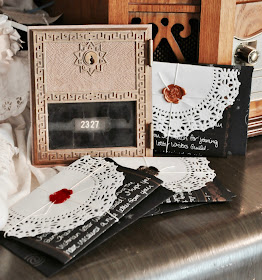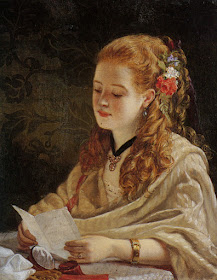Many people who love to write and receive handwritten letters also enjoy using and collecting the various implements and ephemera that go with the experience. From postage stamps and vintage stationery to inkwells and furniture, many enjoy holding on to these pieces of history---many of which will probably never be revisited by modern manufacturers.
Recently, I was at the post office in Pendleton, Oregon, where I'm staying for the summer, and I noticed some metal post office box doors sitting on the counter. The post office was decommissioning some things and they were selling them for $5 each. The clerk said they had a whole box of them and let me sift through it to find the best one. Most of them were dated in the 1950s but this one from 1971 was the only one that still retained the box number. Obviously I'll never use this for its intended purpose---but I like to imagine this as a door which held many secrets and life-changing messages over the years.
The first stamp collector was probably John Bourke, who served as Receiver General of Stamp Dues in Ireland in the late 18th century. He made a book of the revenue stamps he'd collected up until 1774, along with the hand-stamped charge marks that went along with them. Some revenue stamps were also used as proof of postage paid. {A revenue stamp was a label used to collect taxes or fees on various things like alcohol, legal drugs, firearms, playing cards and more. We don't use these any more as these taxes and fees are tacked on automatically through computerized check out and account numbers are used to track payments.}
 |
| Le Philateliste by François Barraud (1929) |
The first postage stamp was used in 1840 and people began collecting them right away. By 1860, this new hobby had spread across the world and some countries began overproducing stamps to sell to collectors. Stamp albums began to appear in shops and catalogs, as well as literature about stamp collecting. Although collectors were mainly children and teenagers in the beginning, many of them grew up to continue their hobby as adults.
For over 175 years, people all over the world have found stamp collecting to be an endlessly satisfying hobby. One is always receiving mail from which to glean more stamps!
I discovered stamp collecting about six years ago when I joined Swap-Bot.com. One of my first swapping partners included a little bag of used postage stamps in the envelope she sent me and I was intrigued. What to do with these? Then I discovered several people who loved to swap out postage stamp bags to help build their collections. Genius!
Most any small envelope can be used as a postage stamp bag---but it's easy to make your own, too, using online templates or your own craftiness. The bag starts out with a certain number of (usually used) postage stamps inside. On the outside of the envelope, you write "return home to" and then your address. You also write how many stamps a person should take out to keep and how many she should put back in. Finally, you write out the numbers 1-5 and leave space for people to write their names next to the numbers. The person you send it to swaps her stamps, signs her name on the outside of the envelope, and mails it off to someone else the next time there is a swap. I usually include about eight stamps to begin with and write "take 3 add 5". The next in line always gives more than they take so, by the time you get the bag back, you've got a lot more stamps than you put in. It's a fun game and a great way to collect stamps from all over the world. In fact, if any Victorian Letter Writers Guild members would be interested in joining a postage stamp bag swap, I'd be happy to set one up!






